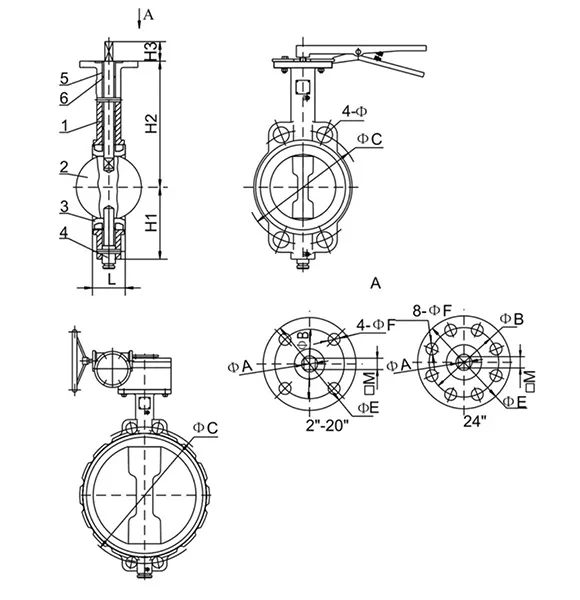10 月 . 02, 2024 00:21 Back to list
Understanding the Importance of Foot Valves in Fluid Control Systems
Understanding Diaphragm Foot Valves Essential Components for Fluid Management
In the world of fluid management systems, the significance of valves cannot be understated. Among various types, the diaphragm foot valve plays a crucial role, especially in applications involving pumping and water management. This article delves into the characteristics, functions, and advantages of diaphragm foot valves, shedding light on why they are integral to effective fluid control.
What is a Diaphragm Foot Valve?
A diaphragm foot valve is a type of check valve that typically contains a flexible diaphragm. Situated at the bottom of a suction line, its primary function is to prevent backflow of fluids, ensuring that pumps maintain prime during operation. It is designed to operate under suction conditions, making it essential for submersible pumps, well pumps, and various other fluid systems.
How Does It Work?
The diaphragm foot valve operates based on pressure differentials. When the pump is active, the pressure difference allows fluid to flow into the pump by lifting the diaphragm. Meanwhile, when the pump is turned off or the pressure in the line decreases, the diaphragm returns to its closed position, effectively sealing off the flow and preventing any backflow. This mechanism is pivotal in maintaining the fluid level in the suction line, ensuring efficient pump performance and longevity.
Key Characteristics
1. Material Composition Diaphragm foot valves are typically constructed from durable materials such as PVC, polypropylene, or stainless steel, allowing them to withstand various environmental conditions and chemical exposures. The diaphragm itself is often made from rubber or elastomeric materials, providing the necessary flexibility and resistance to wear.
2. Size and Configuration These valves come in various sizes, tailored to fit different pipeline diameters and pumping systems. The configuration of the valve can also vary, including options for threaded, flanged, or slip connections, enabling compatibility with existing systems.
di foot valve

3. Pressure Ratings Diaphragm foot valves are designed to handle specific pressure ranges. Selecting the appropriate pressure rating is essential to ensure optimal performance and prevent failure.
Advantages of Diaphragm Foot Valves
1. Prevention of Backflow One of the most significant benefits is their ability to prevent backflow in a system. This feature is crucial in maintaining the integrity of fluid systems and ensuring pumps do not lose their prime, reducing the risk of cavitation and damage to pumping equipment.
2. Efficiency By ensuring that the fluid remains in the suction line, diaphragm foot valves contribute to the overall efficiency of pumping systems. This, in turn, leads to reduced energy consumption and operational costs.
3. Low Maintenance With a simple design and robust construction, diaphragm foot valves typically require minimal maintenance. Regular inspections are usually sufficient to ensure optimal operation, saving time and resources in the long run.
4. Versatility These valves are adaptable for a variety of applications across different industries, including agriculture, mining, wastewater treatment, and more. Their ability to handle various fluid types further increases their utility.
Conclusion
Diaphragm foot valves are pivotal components in fluid management systems, particularly where backflow prevention is vital. Their robust design, simple operation, and versatility make them an excellent choice for maintaining pump efficiency and reliability. By understanding the functionality and advantages of diaphragm foot valves, professionals in various fields can ensure optimal performance and longevity of their fluid systems. As technology advances, innovations in diaphragm foot valve design and materials will likely enhance their efficiency and applicability, further solidifying their role in modern fluid management practices.
Share
-
Understanding the Differences Between Wafer Type Butterfly Valve and Lugged Butterfly ValveNewsOct.25,2024
-
The Efficiency of Wafer Type Butterfly Valve and Lugged Butterfly ValveNewsOct.25,2024
-
The Ultimate Guide to Industrial Swing Check Valve: Performance, Installation, and MaintenanceNewsOct.25,2024
-
Superior Performance with Industrial Swing Check Valve: The Essential Valve for Any SystemNewsOct.25,2024
-
Industrial Swing Check Valve: The Ideal Solution for Flow ControlNewsOct.25,2024
-
You Need to Know About Industrial Swing Check Valve: Functionality, Scope, and PerformanceNewsOct.25,2024